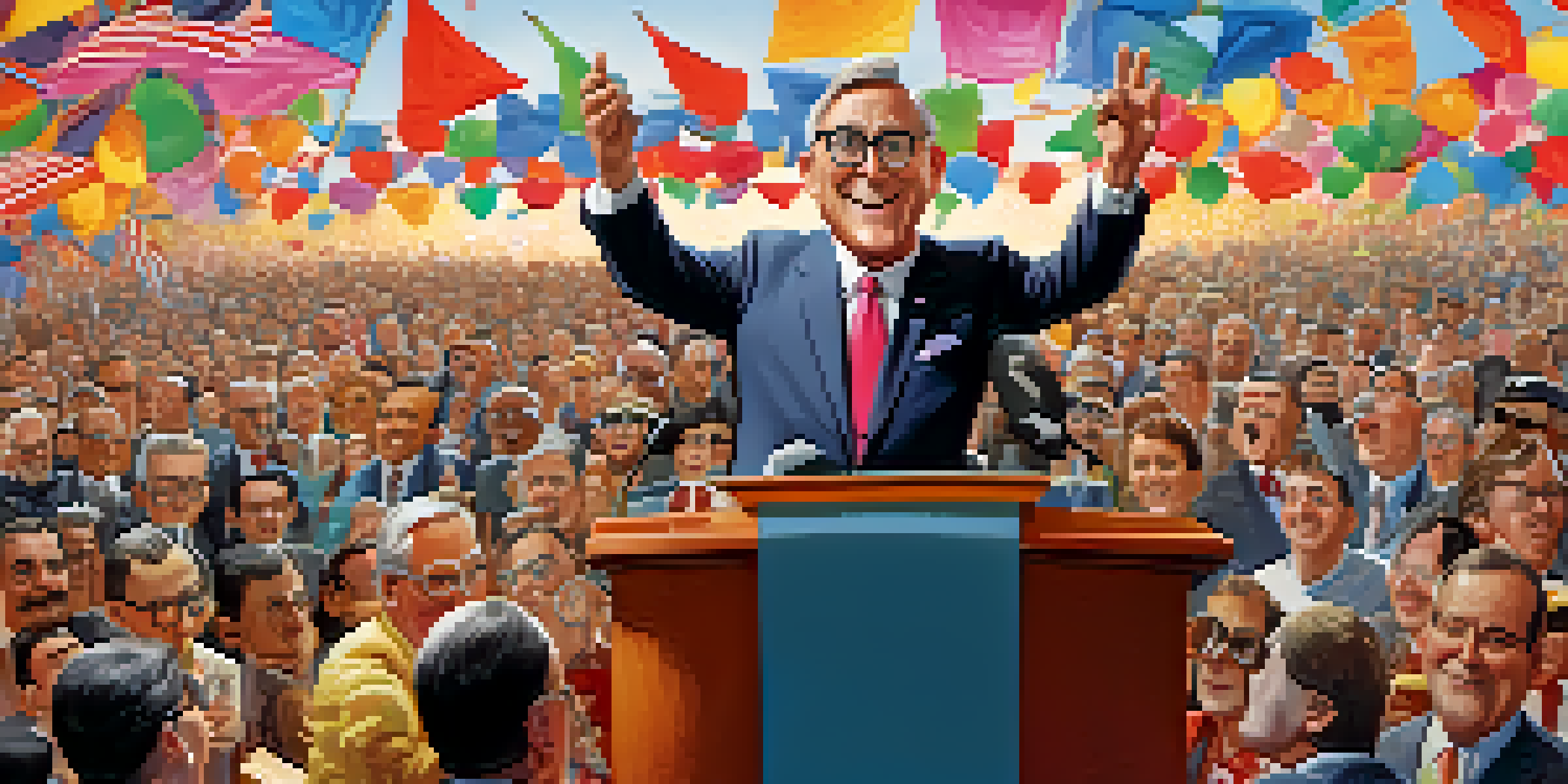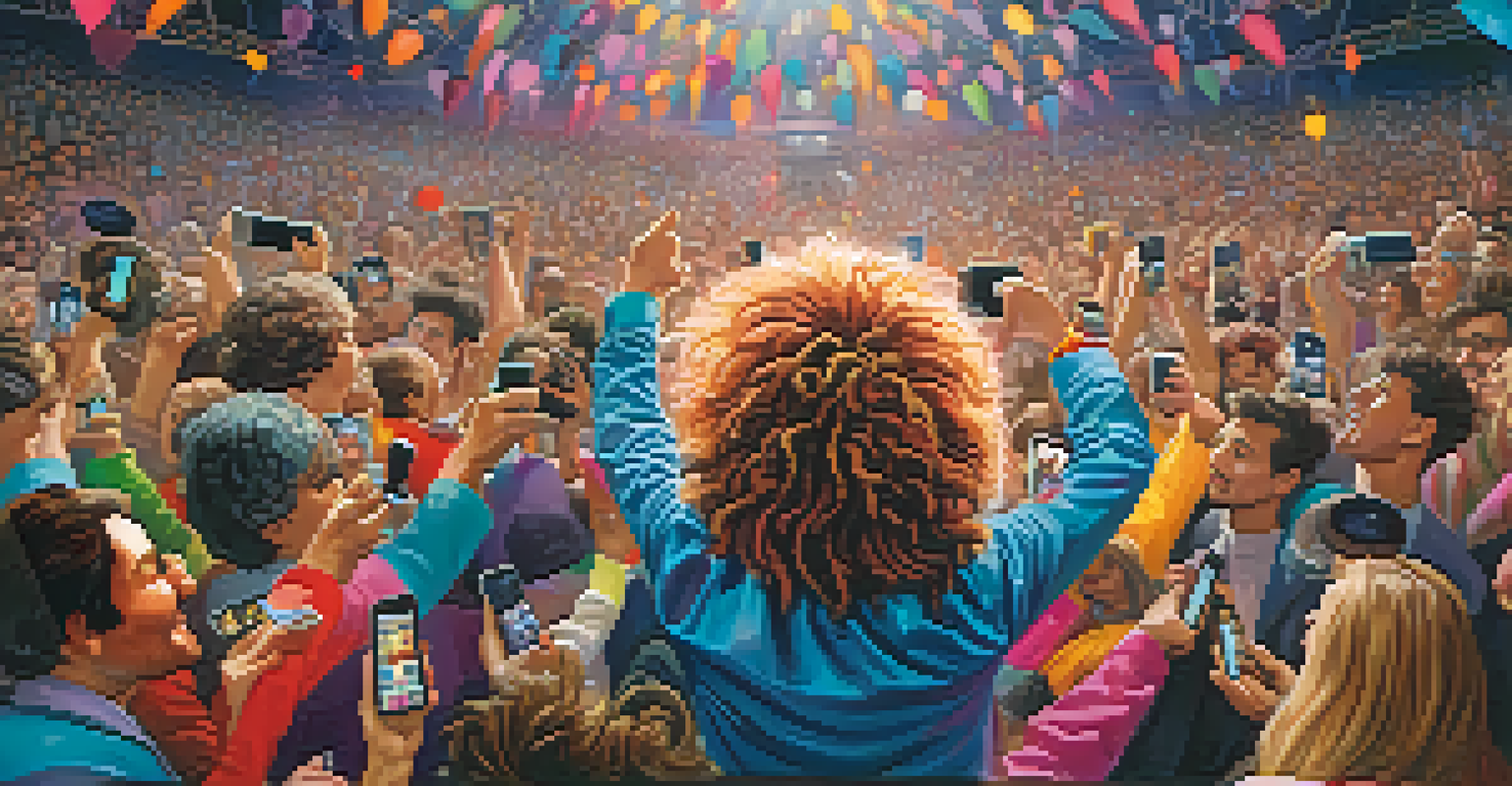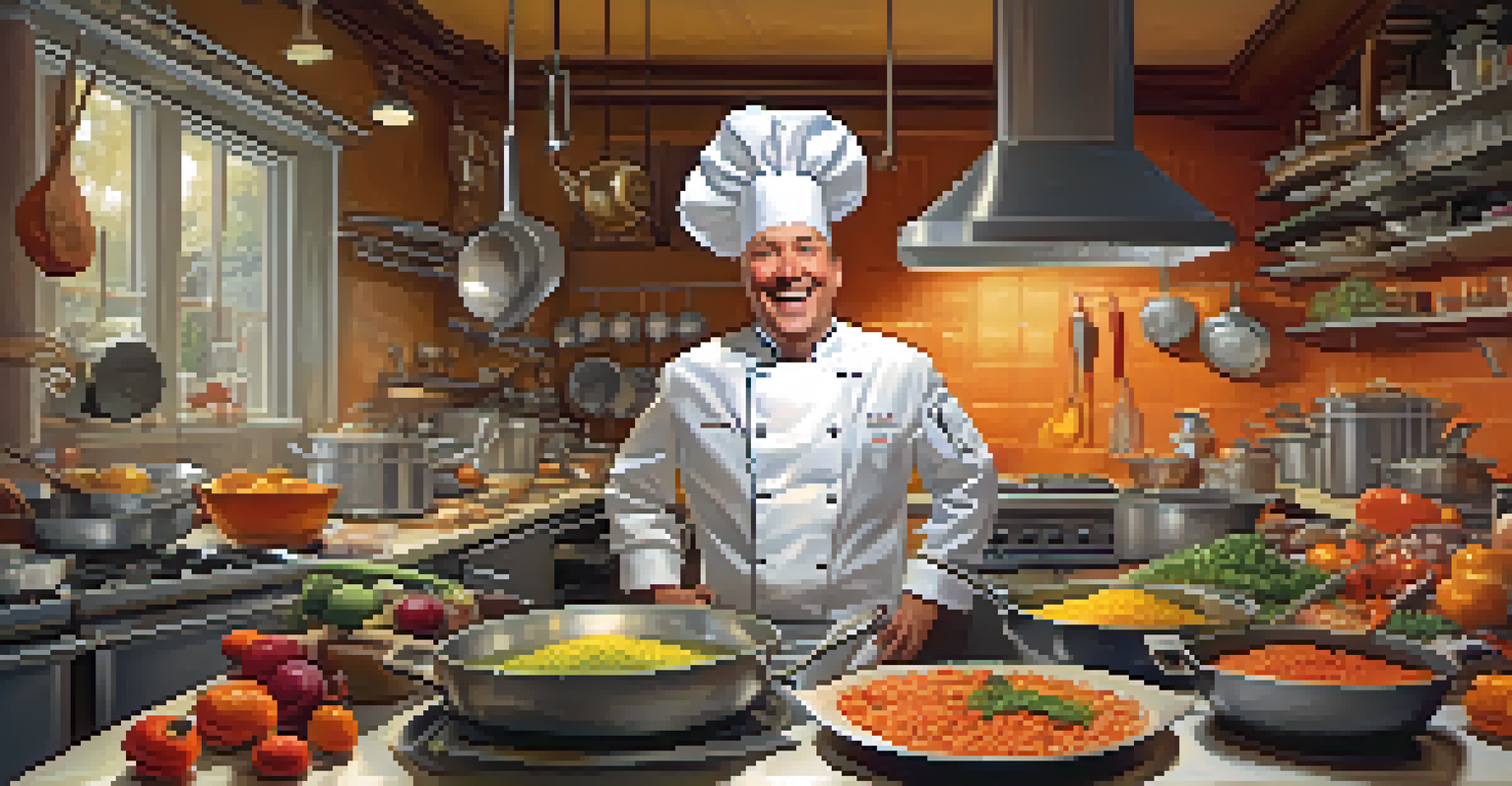Caricature as a Form of Humor in Portrait Art

Understanding Caricature as an Art Form
Caricature is a unique art form that emphasizes exaggerated features and characteristics. Unlike traditional portraiture, which aims for realism, caricatures playfully distort the subject's likeness to highlight specific traits. This playful exaggeration creates a humorous effect that can evoke laughter or a smile, making it a popular choice for entertainment.
Caricature is the art of exaggeration and simplification, capturing the essence of a subject with a playful twist.
Historically, caricatures have been used in various cultures to comment on politics, society, or individuals. They offer a creative outlet for artists to express their views while engaging their audience. This blend of art and commentary is what sets caricature apart from other forms of portrait art.
Caricature artists often study their subjects closely to identify key features that can be exaggerated. Think of it as a fun puzzle—finding the right angle to capture the essence of a person in a lighthearted way. This approach not only showcases the artist's skill but also invites the viewer to appreciate the humor in everyday traits.
The Role of Humor in Caricature
Humor is at the heart of caricature, making it a delightful experience for both the artist and the audience. By taking familiar features and stretching them to the extreme, caricature allows us to laugh at ourselves and others. This lighthearted approach makes it accessible and enjoyable, breaking down barriers between the artist and the viewer.

Consider how a simple exaggeration of a big nose or large glasses can turn an ordinary likeness into something memorable. These humorous elements often resonate with people, creating a shared experience that transcends language and culture. Caricature serves as a reminder that laughter is a universal language.
Caricature Blends Humor and Art
Caricature is a playful art form that uses exaggerated features to create humor while engaging audiences.
Additionally, humor in caricature can serve a deeper purpose, such as social commentary or critique. Artists can use humor to address serious topics in a way that is approachable and engaging. This balance between humor and meaning enriches the art form, inviting viewers to reflect while they laugh.
Famous Caricature Artists and Their Styles
Throughout history, various artists have mastered the art of caricature, each bringing their unique style to the table. One of the most notable figures is Honoré Daumier, whose satirical works captured the political climate of 19th-century France. His ability to blend humor with sharp social commentary solidified his place in the world of caricature.
Humor is a universal language, and caricature speaks it fluently.
Another influential artist is Al Hirschfeld, known for his elegant, flowing lines that brought theater and film personalities to life. Hirschfeld’s work often featured hidden messages within the drawings, adding an extra layer of engagement for viewers. His playful approach to exaggeration exemplifies how caricature can be both entertaining and thought-provoking.
More contemporary artists continue to innovate within the genre, using digital tools to create vibrant and dynamic caricatures. The rise of social media has also allowed for instant sharing and feedback, enabling artists to connect with a global audience. This evolution keeps caricature relevant and exciting, appealing to new generations.
The Process of Creating a Caricature
The process of creating a caricature often begins with observation. Artists take the time to study their subjects, noting unique features and expressions that stand out. This initial stage is crucial, as capturing the essence of a person in a humorous way requires both skill and insight.
Once the artist has a good grasp of the key features, they sketch out their ideas, often starting with a rough outline. This allows for adjustments and playful experimentation with different exaggerations. The goal is to maintain a balance between humor and resemblance, ensuring that the caricature is recognizable yet delightfully distorted.
Historical and Cultural Significance
Throughout history, caricatures have served as a medium for social commentary, providing insight into political and cultural issues.
Finally, artists refine their sketches, adding details, colors, and textures that bring the caricature to life. This finishing touch transforms the drawing from a simple sketch into a vibrant piece of art. The final product not only serves as a humorous representation but also showcases the artist's creativity and style.
Caricature in Popular Culture
Caricature has found its place in popular culture, appearing in various forms of media including cartoons, editorial illustrations, and online memes. Shows like 'The Simpsons' have popularized caricature-style character designs, where exaggerated features become a defining trait of the characters. This familiar style resonates with audiences, making the humor relatable and engaging.
Editorial cartoons often use caricature to comment on current events or political figures. These visual critiques provide a humorous perspective on serious topics, making them more digestible for the audience. By distilling complex issues into playful images, caricature enhances public discourse.
Furthermore, social media platforms have given rise to a new wave of caricature artists who share their work instantly. This accessibility allows for rapid feedback and engagement, fostering a community around the art form. The viral nature of online caricature ensures that humor remains a vital part of our cultural conversations.
Caricature Beyond Humor: A Form of Expression
While humor is often the primary focus of caricature, it can also serve as a powerful form of expression. Artists can convey emotions and narratives through their exaggerated depictions, allowing for a deeper connection with the audience. This aspect elevates caricature beyond mere entertainment, transforming it into a medium for storytelling.
For instance, a caricature that highlights a subject's sadness or frustration can evoke empathy and provoke thought. By exaggerating certain traits, artists can draw attention to important social issues or personal experiences. This duality of humor and seriousness enriches the art form, making it multifaceted.
The Future of Caricature Art
With advancements in technology, caricature art is evolving through digital tools, expanding its reach and engagement.
Moreover, caricature can act as a mirror, reflecting society's quirks and idiosyncrasies. By poking fun at common behaviors or trends, artists encourage viewers to reflect on their own lives. This self-awareness, wrapped in humor, fosters a sense of community and understanding among people.
The Future of Caricature Art
As technology continues to evolve, so does the world of caricature art. Digital tools and software are enabling artists to push the boundaries of creativity, experimenting with new styles and techniques. This shift is not only making caricature more accessible but also expanding its reach to a broader audience.
The integration of caricature into virtual spaces, such as augmented reality and digital art platforms, is also gaining traction. Artists can create interactive caricatures that engage viewers in novel ways, blending humor with technology. This evolution ensures that caricature remains a relevant and dynamic art form.

Looking ahead, the challenge will be maintaining the essence of caricature while embracing these new tools. As artists navigate this landscape, they will likely continue to find innovative ways to connect with audiences, ensuring that humor and creativity remain at the forefront of caricature art.